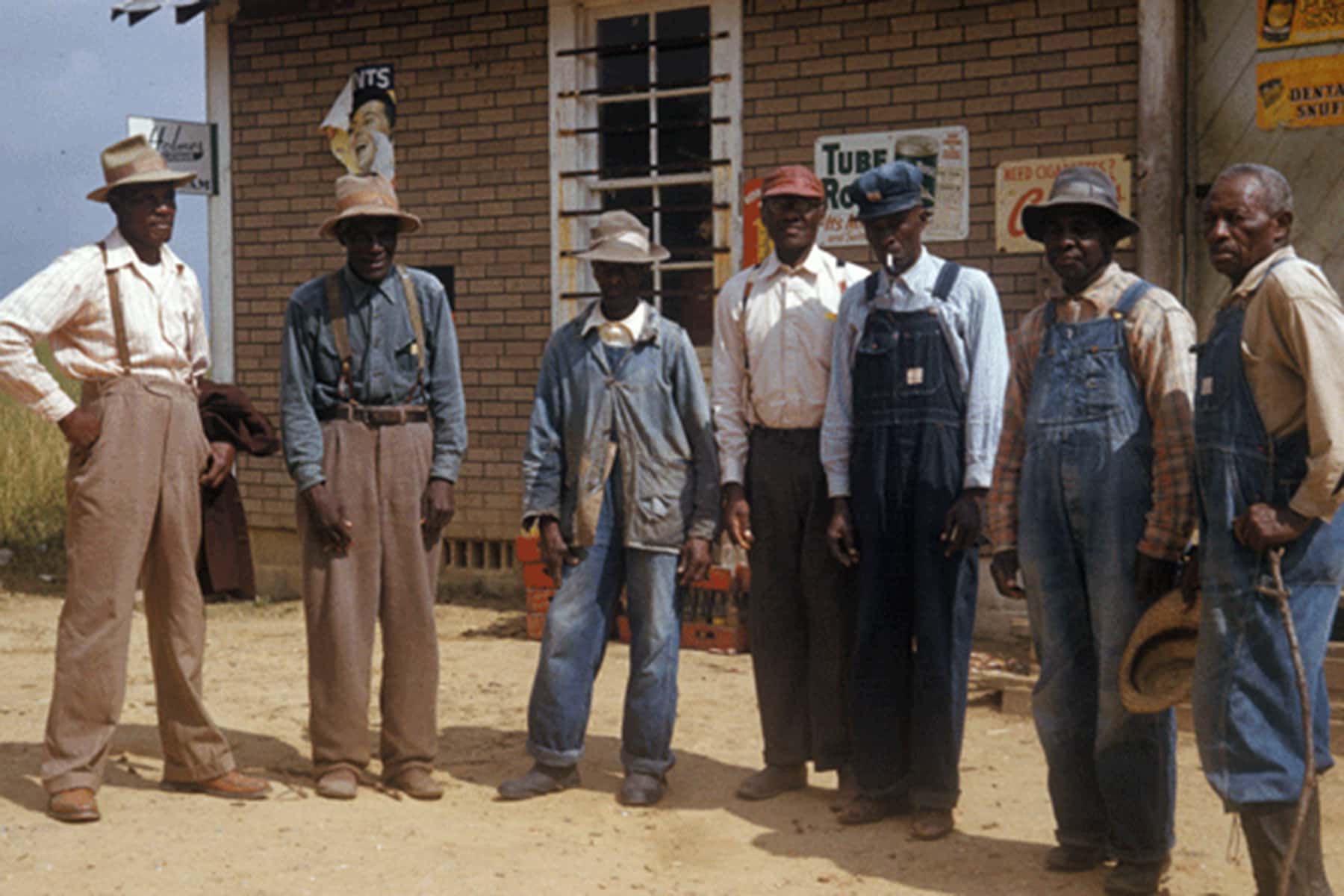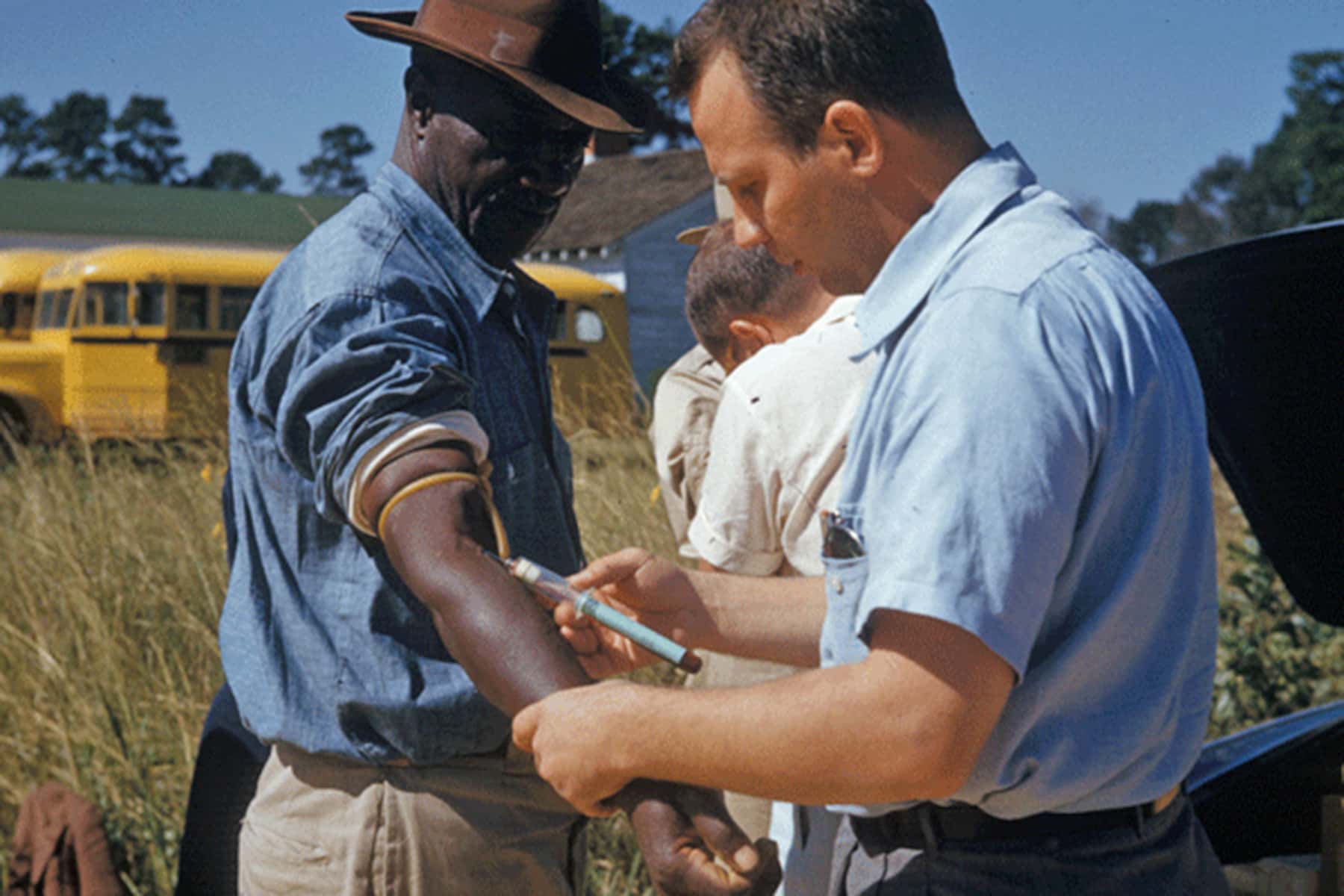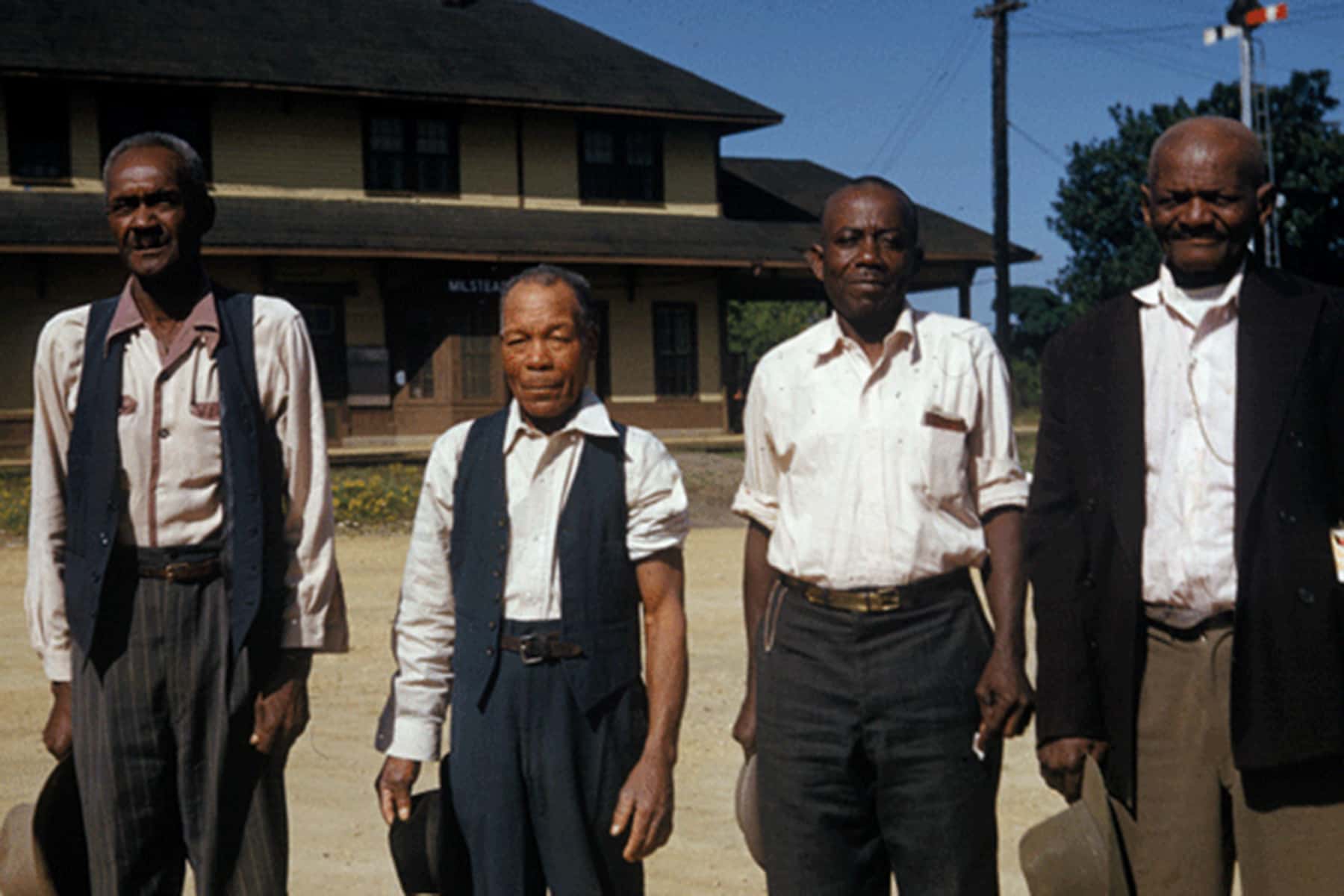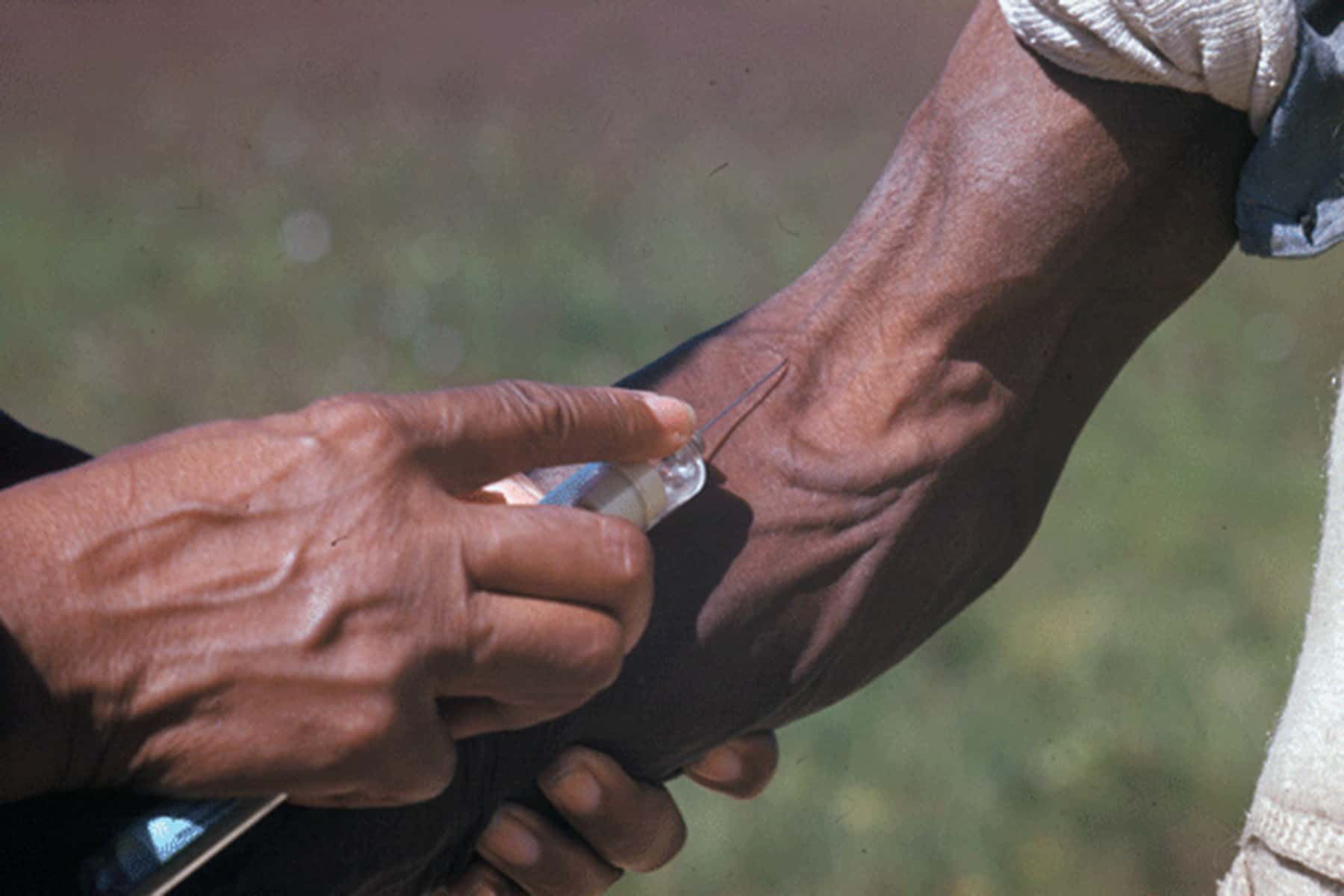
“Of all the forms of inequality, injustice in health is the most shocking and the most inhumane.” – Rev. Dr. Martin Luther King Jr.
“With Henrietta (Lacks) unconscious on the operating table in the center of the room, her feet in stirrups, the surgeon on duty, Dr. Lawrence Wharton Jr … sat on a stool between her legs … but first — though no one had told Henrietta that (Richard) TeLinde was collecting samples or asked if she wanted to be a donor — Wharton picked up a sharp knife and shaved two dime-sized pieces of tissue from Henrietta’s cervix: one from her tumor, and one from her healthy cervical tissue nearby. Then he placed the samples in a glass dish.” – Rebecca Skloot, “The Immortal Life of Henrietta Lacks”
Those cells stolen from a 31-year-old Black woman born in Roanoke, Virginia would become the most important human cells in history. Henrietta Lacks’ cells would fly in space in the first missions to test what a zero gravity environment would do to humans. Today trillions of her amazing cells are still being used in labs around the world.
What made her cells so amazing is that they are “immortal,” meaning that they continue to replicate themselves. Two days after Henrietta went home from the hospital, her cells which had been placed in culture, were growing with “mythological intensity.” They were doubling every twenty four hours. They would eventually be sold to researchers around the world to study a variety of diseases. They were the first ever “immortal” human cell line grown in culture.
Her cells would eventually be called simply HeLa cells, with no attribution of where they derived. It has been over seventy years since the cells were stolen from her body. Ten years ago someone estimated that the number of her cells that had been used in labs would easily weigh 50 metric tons, the equivalent of one hundred Empire State Buildings. The importance of her cells was disclosed by Rebecca Skloot.
“HeLa cells were vital for developing the polio vaccine; uncovered secrets of cancer, viruses, and the atom bomb’s effects; helped lead to important advances like in vitro fertilization, cloning, and gene mapping: and have been bought and sold by the billions.”
HeLa cells have been used in the study of the coronavirus, SARS-CoV-2, the virus which we call COVID-19. Lab assistant Mary Kubicek, who was assigned the task of putting the cells from Lacks in the culture, would later recollect that they were “spreading like crabgrass!” The cancerous cells grew twenty times faster than her normal cells, which generally died within a few days. The cancerous cells were unstoppable in their growth when given the proper amount of food and warmth.
These “immortal” cells, which have been used by every doctor in every medical school on the planet and in all of the labs that study human diseases are a miracle. They came from a Black woman who for decades was unknown. It wasn’t until fifty years after her death that the family discovered the story of her “immortal” cells. They have been fighting for compensation but could never be properly compensated for the importance of her cells to medical research. The billions of dollars still being made by the selling of her stolen cells, is a legacy of hundreds of years of the devaluation of Black people in America by both the scientific and medical community.
In many ways, the scientific community began the devaluation of Blacks in the eighteenth century by inventing the concept of biological races. An idea which began in Europe, spread to the shores of North America and would be used as one of the justifications for the enslavement of millions of people form Africa and their descendants. The theory of different biological races has been disproven. This social construction of race, has clouded our ability to see through any lens other than a racial one.
French physician François Bernier was the first to come up with a classification of humans into separate “varieties.” His 1684 publication, “A New Division of the Earth, According to the Different Species or Races of Men Who Inhabit It,” divided humanity based on skin color and other outward physical characteristics.
In 1735, Swedish botanist, zoologist and physician Carl Linnaeus came up with a list of human “varieties” as well. He listed four species of humans; Americanus (Native Americans), Africanus (Africans), Asiaticus (Asians) and Europeanus (Europeans). Unsurprisingly, he gave very positive attributes to those he called members of the Europeanus group and less flattering descriptions of all others.
In 1749 French naturalist Georges Buffon came up with six separate “races.” And just thirty years later, in 1779 Johann Friedrich Blumenbach, a German anthropologist, and physician, published Decas Craniorum where he described five races of humans. He described the Caucasian race (Whites), the Mongolian race (Asian), The Malayan race (Southeast Asians and Pacific Islanders), the Ethiopian race (Blacks), and the American race (Native Americans). He considered those from the Caucasus Mountain’s region, the intersection of Europe and Asia, to be the best because a skull from that region was in his opinion, the most beautiful of the skulls in his collection.
This new way of seeing people would eventually lead to hierarchies, which always placed Whites on top. They were considered superior and the norm to be judged by. In time, the so-called superiority of Whites would be used as the justification for enslaving supposedly “inferior” Black people.
Harriet Washington, in her groundbreaking book, Medical Apartheid, looked at the early history of this fascination with “race” which led to medical experimentation with Blacks used as guinea pigs in medical “experiments.”
“Dangerous, involuntary, and non-therapeutic experimentation upon African Americans has been practiced widely and documented extensively at least since the eighteenth century.”
Washington found documented evidence that for years enslaved Blacks were used to test new medicines and surgical techniques. When enslaved Africans became sick they were often accused of feigning illness to get out of work. Calling a doctor was the absolute last resort in most cases. They would in many cases use strong smelling salts to “test” if someone was actual really ill. These doctors often “prescribed” whippings to remedy those they said were faking illness according to Medical Apartheid.
“Doctors recommended that an owner apply ‘9 drops of essence of rawhide’ or ‘oil of hickory’ to the back of a sick slave.”
Slaveholders determined who needed medical treatment. If they said it was not necessary, or simply did not want to pay for it, they allowed Blacks to deal with the consequences of their illness without treatment and in many cases to simply die. Traditional African medical treatments were often secretively used by the enslaved and saved the lives of many.
The use of Black bodies to test medical treatments and experimental procedures was the norm in medical schools in the country for a number of years. Black cadavers were used to train doctors because they were easily acquired. Both individuals and medical schools paid handsome prices to acquire Black body which had recently been buried, as well as live “subjects.” Those who profited by digging up Black corpses and selling them to medical schools became known as “night doctors.” Whites who “owned” Blacks willingly sold or rented them out to make extra cash when “researchers” inquired about purchasing a short amount of time with the enslaved.
In one of the most well known instances of this type of debasement of Blacks, the case of Dr. James Marion Sims stands out. He was named president of the American Medical Association in 1876, and in 1880, he helped found and became president of the American Gynecological Society. Sims is venerated as the father of gynecology, despite the fact that it is well known that he “conducted years of painful and degrading experiments, without anesthesia or consent, on a group of enslaved women” according to Washington.
Sims purchased a group of enslaved women as he was working to solve a severe effect of childbirth at the time called vesicovaginal fistula. This exceptionally painful condition manifest as openings between the remains of the vagina, bladder and rectum due to a difficult childbirth. In describing this time as the most “memorable time” of his life in his autobiography, Sims talked about the ease with which he could acquire these Black subjects. “There was never a time that I could not, at any day, have had a subject for operation.”
The names of at least three of these enslaved women are engraved in his records, Lucy, Anarcha, and Betsey. He performed 30 surgeries on Anarcha alone, all without anesthesia. The first he experimented on was 18-year-old Lucy. These exceptionally painful first experiments on Lucy were documented by Sims. “Lucy’s agony was extreme. I thought she was going to die… It took Lucy two or three months to recover entirely from the effects of the operation.” Sims like many Whites claimed Black people did not feel pain in the same way as Whites. This misguided belief is still held by many White healthcare practitioners today. Black children were often the victims of other experiments by Sims for a number of years as well.
Sims was far from the only person who conducted experiments on helpless Blacks. When Dr. James Dugas pioneered a new eye surgery, 80% of his subjects were black. In 30 of 37 experimental cesarean sections performed by Dr. François Marie Prévost, he used enslaved Black women as subjects. Dr. Walter F. Jones experimented by pouring boiling water on naked enslaved typhoid pneumonia patients at four-hour intervals.
These experiments and many others led to myths about Blacks that persist to this day. Medical Apartheid documented many of these horrible myths.
“Dr. Charles White declared that ‘[ blacks] bear surgical operations much better than white people and what would be the cause of insupportable pain for white men, a Negro would almost disregard… [ I have] amputated the legs of many Negroes, who have held the upper part of the limb themselves.’”
“Dr. James Johnson, sneered, ‘When we come to reflect that all the women operated upon in Kentucky, except one, were Negresses and that these people will bear anything.’”
This long history of mistreatment by the medical establishment continued into the twentieth century as well. Neurosurgeon Harry Bailey at a 1960‘s medical conference at Tulane Medical School made it abundantly clear that Black bodies were still readily available for medical experiments.
“(It was) cheaper to use niggers than cats because they were everywhere and cheap experimental animals.”
The most influential and infamous experiments on Blacks was the study done on Black men in Tuskegee, Alabama. The official name of the experiment was the “Tuskegee Study of Untreated Syphilis in the Negro Male.” The CDC describes the experiment on their website.
“The study initially involved 600 Black men – 399 with syphilis, 201 who did not have the disease. Participants’ informed consent was not collected. Researchers told the men they were being treated for “bad blood,” a local term used to describe several ailments, including syphilis, anemia, and fatigue. In exchange for taking part in the study, the men received free medical exams, free meals, and burial insurance. By 1943, penicillin was the treatment of choice for syphilis and becoming widely available, but the participants in the study were not offered treatment.”
The “study” began in 1932 and lasted until it was exposed by Peter Buxtun in the late sixties and early seventies. The U.S. Public Health Service (PHS) conducted the experiment where over six hundred black men, their wives, and their children were deceived into participating so that PHS scientists could trace the progress of the untreated disease in black men.
There were criticisms along the way. A major research paper in 1936 criticized the study because it was not known at the time if the men are being treated. Local physicians were asked to assist with the study and told to not treat the men. A decision was eventually made to follow the men until death instead of the original idea of tracking them for 16 years.
In interviews with men after the experiment was ended, the public discovered that all the men received was a “certificate” of participation as well as $25 after twenty five years as a subject.
Everything went on for decades with no one really speaking out loudly enough to end the experiment. In 1966 while working as a venereal disease investigator for the PHS, Buxtun was shocked to hear that a physician who had treated syphilis with penicillin was reprimanded for “ruining one of our volunteers.” Buxtun began to investigate and wrote a report.
One of his supervisors responded by telling Buxtun “I’ll send your report up the line, but remember I have a wife and kids. Please forget my name when they ask you why you did this.” Another scorned his report as “trash,” insisting, “the men were all volunteers.”
Others joined Buxtun in criticisms of the experiments and in 1969, despite these complaints and calls to end the study, the Centers for Disease Control (CDC) reaffirmed the need for the study and reached out for and received local medical societies’ support (American Medical Association and National Medical Association chapters officially supported a continuation of the study).
By 1972 the first news articles about the experiment was written by Jane Heller. In 1981, James H. Jones wrote the definitive book on Tuskegee. In Bad Blood: The Tuskegee Syphilis Experiment, Jones documented the entire ordeal. He found that there was never a formal written protocol for the experiment. Instead, the hundreds of nurses, physicians and others involved simply played it by ear. The main tests and examinations consisted of periodic blood tests, clinical examinations and then autopsies when the men eventually died. All of the men were chosen because they already had late stage syphilis.
A Black nurse, Eunice Rivers, was hired early to assist in getting the men, who were mistrustful of Whites, to participate. Later in 1970, another Black nurse, Elizabeth Kennebrew played a similar role. Another tragic irony was that Macon County’s Black physicians went along with the experiment as well.
Eventually over 400 hundred Black men would be the victims of this horrific study carried on for 40 years. On November 16, 1972 the study was terminated. A class action lawsuit was filed by civil rights attorney Fred Gray. He had gained fame as the attorney who represented Rosa Parks in 1955. He was also elected to the Alabama State House of Representatives in 1970, becoming the first Black Democrat to serve in that body since Reconstruction.
Gray patiently waited to file the lawsuit, hoping the government would voluntarily pay compensation and medical bills for the victims and their families. In 1973, Senator Edward Kennedy held a series of hearings in Congress about the experiments. Jones described the testimony of two of the survivors, Charles Pollard and Lester Scott.
“Pollard and Scott unfolded a forty-year saga of lies and deceit, of unlettered men who had trusted and been betrayed by educated men. Each, in turn, related how he had answered the PHS’s call for blood tests; how he had been told his blood was bad; and how he had cooperated for forty years with doctors who said they were treating him. ‘They ought to give us compensation or something like that, where we can see other doctors and continue our health.’”
The CDC began contacting the men in April 1973 and telling them the truth. They gave the men advice about contacting doctors to have tests conducted and how to receive proper treatment. They also agreed to pay burial expenses and finally extend treatment to the wives and children who had contracted syphilis but refused to pay a cash settlement to the victims.
This refusal led Gray to file a $1.8 billion class action lawsuit. Eventually each survivor received a settlement of $37,500 for those syphilitic subjects still living and $15,000 for their heirs, as well as $16,000 for surviving control subjects and $5,000 for their heirs. This settlement paled in comparison to the $3 million per client Gray asked for the survivors and each of their heirs. In the end, the settlement amount was only $10 million, of which Gray received $1 million for his services.
Ultimately the story would disappear from the headlines and no one would be held accountable, no one lost their jobs or licenses, and no one was censured. In May 1997, President Bill Clinton issued a formal apology for the experiment. The damage had already been done.
The news of the Tuskegee experiment would be a causative factor in the continuation of the mistrust by Blacks in the medical and scientific community. That longstanding mistrust has played out in the disparate outcomes during the current COVID pandemic. A lack of trust, and continued disparate care received by Blacks due to systemic racism being embedded in the healthcare system, has proven to be deadly for Blacks.
Early on in the pandemic, Blacks were least likely to receive access to care, many were turned down repeatedly at hospitals around the country when reporting COVID symptoms. Once the vaccines became available Blacks were still distrustful due to centuries of untrustworthy behavior by the medical and scientific community. As a result, Blacks have very low rates of receiving the vaccines and boosters, putting them at increased risk of serious illness and death due to COVID.
In 1998, prize-winning health and science reporter Philip J. Hilts, reported that “New York City boys, many of them black or Hispanic, were given the now-banned diet drug fenfluramine.The three experiments took place at the New York State Psychiatric Institute over three years, ending in 1996. In the experiment 34 children, all of whom were 6- to 10-year-old black or Hispanic boys, were given intravenous doses of fenfluramine to test a theory that violent or criminal behavior may be predicted by levels of certain brain chemicals.” This was eerily similar to the experiments done on enslaved children in the 1800s.
Centuries of devaluation of Blacks by scientist, and researchers who rarely use black subjects in drug trials, have had devastating effects on the health of Blacks. By almost every measure, Blacks health status is significantly lower than that of the White community. Black people are more like to receive inadequate medical care, live in polluted environments and live in communities where quick access to medical care is not necessarily available.
Despite what many want to believe, Black people are not less healthy than Whites primarily due to lifestyle choices. The system has consistently treated Black people with less proper medical care than is deserved. It’s just another example of how America has devalued Black people since they first arrived in the British colonies in 1619.
“The future of the Negro lies more in the research laboratory than in the schools…. When diseased, he should be registered and forced to take treatment before he offers his diseased mind and body on the altar of academic and professional education.” – Thomas Murrell, Public Health Service physician
“I suggest that a monument be raised and dedicated to the nameless Negroes who have contributed so much to surgery by the ‘guinea pig’ route.” – Dr. John A. Kenney, Tuskegee Institute (1941)
- Do Black Lives Matter? Part 1: An introduction to the historical devaluation of Black people
- Do Black Lives Matter? Part 2: The devaluation of Black people in politics and law
- Do Black Lives Matter? Part 3: The devaluation of Black people in the criminal justice system
- Do Black Lives Matter? Part 4: The devaluation of Black people in science and medicine

















